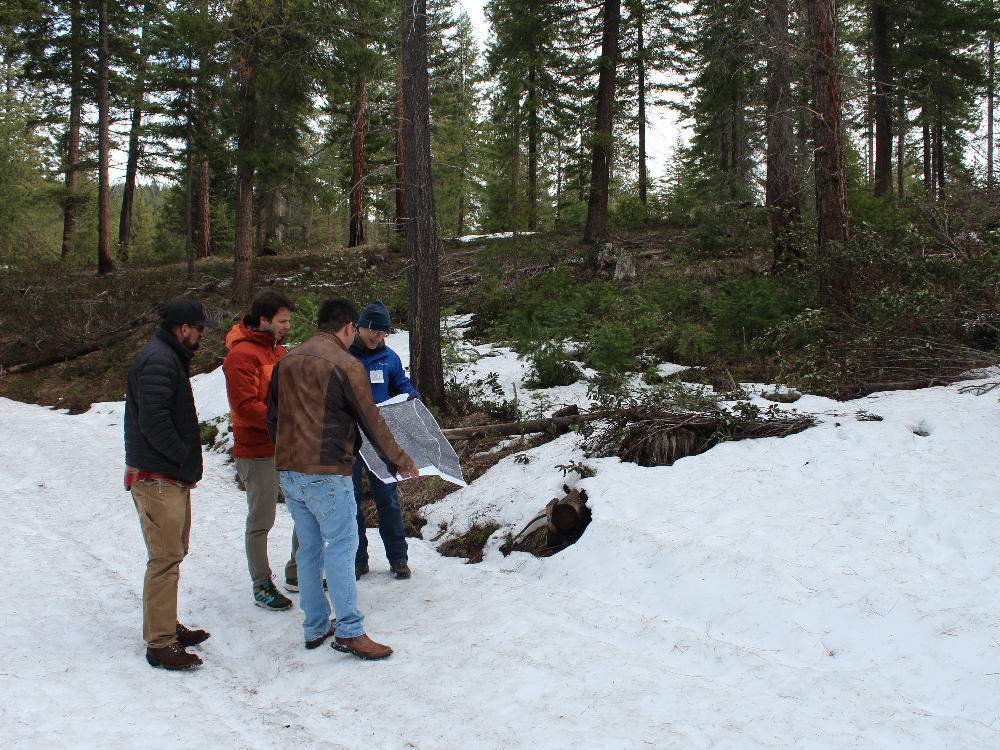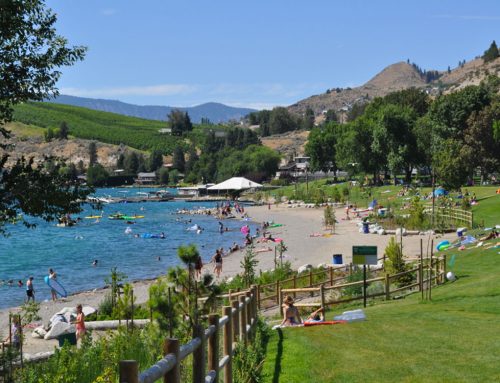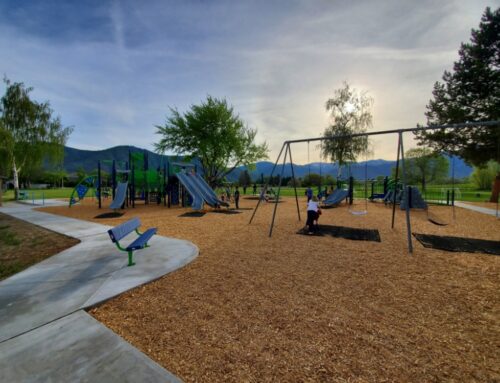Team to use test burns to study fire pattern indicators
information released by Okanogan-Wenatchee National Forest
An internationally recognized leader in wildland fire and fire science will visit Chelan County this month to conduct a field study that aims to better determine the origin point of wildland fires.
Photo above: From the left, Benton Merritt of the U.S. Forest Service, Dr. Juan Cuevas of the University of Queensland, Mike Barajas of the U.S. Forest Service and Dr. Albert Simeoni of Worcester Polytechnic Institute review an aerial photo of the property near Fish Lake that will serve as a research site May 9-13. The men visited the site in March in preparation for the upcoming Wildland Fire Pattern Indicator Reliability Study.
Working in conjunction with the Chelan County Fire Marshal’s Office and the U.S. Forest Service, Dr. Albert Simeoni of Worcester Polytechnic Institute in Worcester, Mass., will bring his team to the Okanogan-Wenatchee National Forest for six days of preparation and testing. The testing event, called the Wildland Fire Pattern Indicator Reliability Study, will be May 9-13.
“Getting to test in a totally different ecosystem than the one where we usually conduct our experiments on the East Coast really allows us to expand the scope of our research,” Simeoni said.
Simeoni is an internationally recognized leader in fire science with more than 15 years of experience developing experimental and analytical techniques to better understand fire dynamics and predict fire behavior. He is the head of the Department of Fire Protection Engineering at the Worcester Polytechnic Institute.
Previously, in 2016 in the Pinelands National Reserve of New Jersey, Simeoni conducted a study of the reliability of fire pattern indicators used in wildland fire investigation, which is funded by a grant from the National Institute of Justice. He returned to the reserve this year with his team member and project co-lead, Dr. Juan Cuevas, for a follow-up of the original study; however, Chelan County Fire Marshal Stephen Rinaldi and personnel with the Okanogan-Wenatchee National Forest’s Wenatchee Ranger District were able to convince Simeoni to add another site in north central Washington to the study.
“Chelan County offers different types of vegetation and sloping topography not found on the East Coast site,” Rinaldi said. “The data collected will be specific to our area and will aid fire investigators throughout the Northwest.”
The test site will be near Fish Lake, about 20 miles north of Leavenworth. The site, which will include 16 1-acre test plots, has a mixture of timber, grass and shrub. Following the testing, a planned controlled burn training session for the Wenatchee River Ranger District also will occur.
In March, a team that included Simeoni, Rinaldi and Mike Barajas, Wenatchee River Ranger District assistant fire management officer, visited the Fish Lake area to identify several areas that would accommodate the test burns needed for the study.
“Our goal is to meet multiple objectives and provide training opportunities,” Barajas said. “We will be looking at examples of burn sites to determine the validity of burn indicators for arson cause and origin determination and also looking at different burn characteristics. When determining the cause of a fire, we look at the fire from the outside in, looking for the origin.”
During the May event, instrumentation such as weather stations, thermocouples and cameras will be used on each test plot to collect data. Study participants then will examine the sites to identify typical indicators – and their reliability – that are used in the investigation of wildland fires to help determine origin and cause. The information gathered then can be replicated as well by Simeoni’s team in a lab for future study.
“During these six days, we will try to collect as much data on fire patterns as possible and we will work with our partners to define a sustainable research program for the years to come that aims at integrating feedback from the end-users to help drive our research agenda to really help the people who conduct wildland fire investigations,” Simeoni said.
The information that will be derived from the study will have a profound impact on the industry as a whole, from aligning fire investigator techniques on a national level to better identifying people responsible for wildfires on a local level, Rinaldi said. The data gathered also may be expanded into other research areas, including forest health and suppression methods, he said.
“We are hoping to have a successful event so Dr. Simeoni and his team consider coming back to our area annually to conduct research,” Rinaldi said. “If we can develop better methods in investigating fires then we may, in turn, be able to develop better wildfire prevention methods. For north central Washington to play a role in that is exciting.”
The study group will include the research team from Worcester Polytechnic Institute; staff and crews from the U. S. Forest Service’s Wenatchee River Ranger District; and subject matter experts with the National Fire Protection Association – Technical Committee for NFPA 921 and the National Wildfire Coordinating Group. Supporting the study group will be Lake Wenatchee Fire & Rescue, Chelan County Fire District No. 3 and the Chelan County Fire Marshal’s Office.








